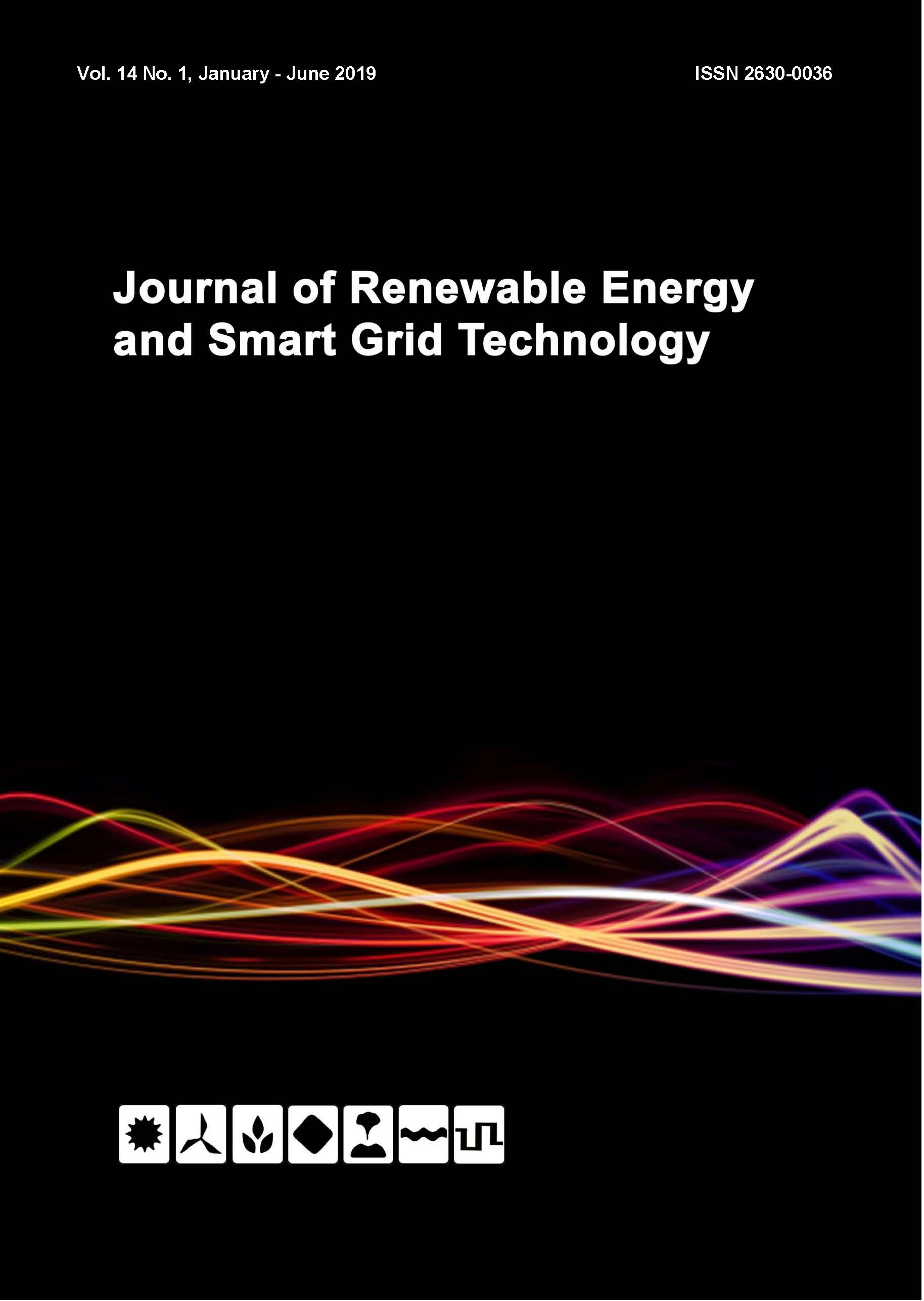A Novel PV Size Selection for Time of Use Tariff for Residence in Phayao Province, Thailand
Keywords:
Photovoltaic, Time of Use Tariff, ResidentialAbstract
This research aims to study the photovoltaic (PV) size for residence that consider to take an advantage from the electricity cost of time of use (TOU) tariff. The study is conducted by considering the 2015 tariff rate of Provincial Electricity Authority (PEA). The research is studied only residence with electricity consumption over 150 kWh per month and at voltage level lower than 22 kV. In the study, the electricity generated from PV is used in peak time periods only. As the simulation results, the minimum and maximum PV size selection chart is demonstrated. The minimum and maximum PV size depend on the total electricity consumption before PV installation (kWhT,E) and the existing ratio of electricity consumption in peak time ( ). If the electricity consumption per month and the ratio of electricity consumption in are increasingly high, the maximum size of the PV installation will be accordingly enlarged as well. In addition, the results showed that the customers who use the total electricity consumption less than 500 units per month and the ratio of electricity consumption in peak time more than 0.8 will not benefit to the TOU tariff.
References
[2] Okoye, C. O., & Solyali, O. (2017). Optimal sizing of stand-alone photovoltaic systems in residential buildings. Energy, 126, 573–584.
[3] Sadineni, S. B., Atallah, F. & Boehm, R. F. (2016). Impact of roof integrated PV orientation on the residential electricity peak demand. Applied Energy, 92, 204–210.
[4] Sampaio, P. G. V., & Gonzálezb, M. O. A. (2017). Photovoltaic solar energy: Conceptual framework. Renewable and Sustainable Energy Reviews, 67, 590–601.
[5] Provincial Electricity Authority (PEA). (2015). Electricity tariffs classified by electricity sector. Retrieved from https://esd.pea.co.th/pdf/electricity_rate_58_02.pdf
[6] Syed, I. M., & Raahemifar, K. (2016). Energy advancement integrated predictive optimization of photovoltaic assisted battery energy storage system for cost optimization. Electric Power Systems Research, 140, 917–924.
[7] Songpol, P., Nopparat, K., Wichaphon, F., Thananat, L., & Bunyawat, V. (2018). Electricity cost saving simulation of changing to time of use rate (TOU). Thai Science and Technology Journal. (Accepted paper)
[8] Greenzone (Thailand) Co.,Ltd. (2013). Solar PV system information pack – fit program. greenzone (Contribute to a greener earth). Retrieved from https://www.greenzone-thailand.com
[9] Department of Alternative Energy Development and Efficiency. Thailand (2018). Potential of solar radiation database in Thailand 2018. Retrieved from http://www.dede.go.th/ewt_news.php?nid=47941&filename=index
Downloads
Published
How to Cite
Issue
Section
License
All copyrights of the above manuscript, including rights to publish in any media, are transferred to the SGtech.
The authors retain the following rights;
1. All proprietary rights other than copyright.
2. Re-use of all or part of the above manuscript in their work.
3. Reproduction of the above manuscript for author’s personal use or for company/institution use provided that
(a) prior permission of SGtech is obtained,
(b) the source and SGtech copyright notice are indicated, and
(c) the copies are not offered for sale.









